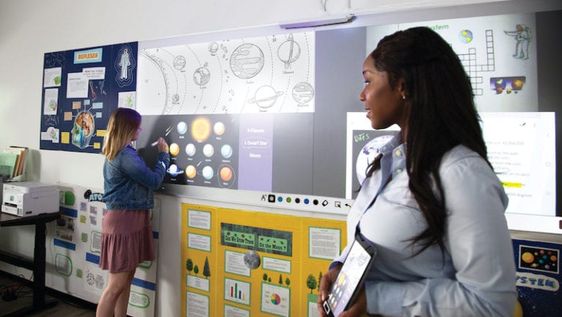In today’s rapidly evolving educational landscape, many teachers are faced with the challenge of accommodating both online and in-person learners simultaneously. This situation is referred to as hybrid or blended learning. While it might seem daunting initially, there are strategies and tips that can help you successfully master this mode of teaching.
1. Plan your lessons thoughtfully
For a seamless hybrid lesson, plan the content in such a way that it caters to both sets of learners. Consider preparing digital resources that can be utilized in person and shared easily with remote students. Embed interactive activities throughout the lesson so that all students can participate equally.
2. Organize your classroom effectively
Effective communication is crucial for an inclusive learning environment. Arrange your physical classroom to ensure that both the teacher and remote learners are visible to each other. Use video conferencing tools that allow screen sharing and annotation features to engage online students.
3. Set expectations clearly
Make sure that both online and in-person students understand the class expectations with regards to behavior, participation, deadlines, and communication channels. Provide clear instructions at the beginning of each lesson and reinforce them regularly.
4. Encourage collaboration and interaction
In any learning environment, collaboration is key to student engagement. Pair up in-person students with online counterparts for group projects or designated discussion times. Use collaborative digital tools like Google Docs or Padlet as platforms for brainstorming and co-creation.
5. Provide opportunities for student feedback
Offer online surveys, polls, or Q&A sessions to give every student a chance to voice their questions or concerns about the course materials or format. Address feedback regularly by adjusting teaching methods accordingly.
6. Utilize technology effectively
Leverage available technology to enhance student interaction with course content and keep them engaged during lessons. Use presentation software that supports multimedia content like videos, images, and interactive websites. Incorporate real-time poll questions and quizzes to ensure knowledge retention.
7. Assess both groups fairly
In a blended learning environment, it’s crucial to develop assessment methods that accommodate both in-person and online learners. While some traditional practices may still be relevant, consider implementing digital assessment tools or open-book examinations that incorporate problem-solving and critical thinking elements.
8. Adapt to challenges with patience and creativity
The path to seamless hybrid teaching is one of constant learning and adaptation. Both educators and students will face challenges as they navigate this new landscape. Approach these hurdles with patience, creativity, and a willingness to alter your methods.
Overall, the key to a successful hybrid learning environment is flexibility, careful planning, and open communication between instructors and students. By embracing these tips, educators can foster an inclusive space where all learners feel engaged and supported, regardless of their physical location.





